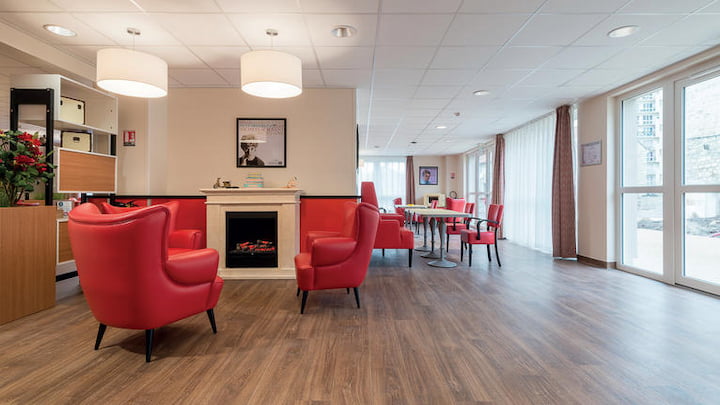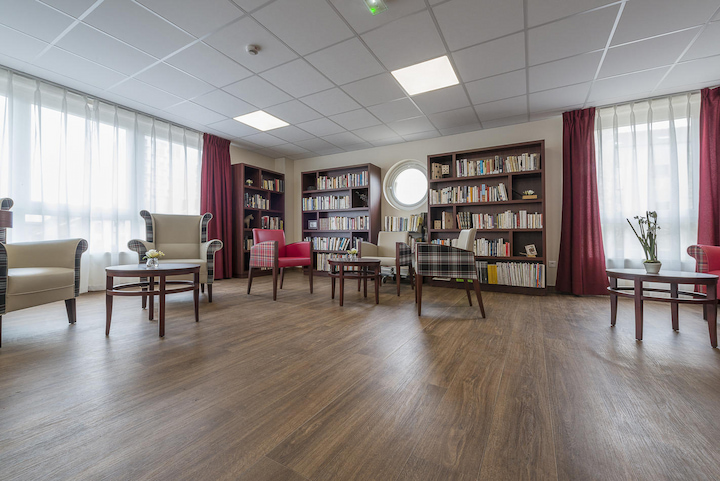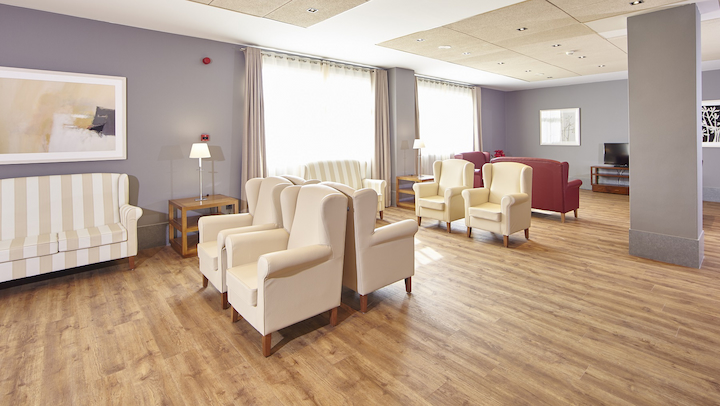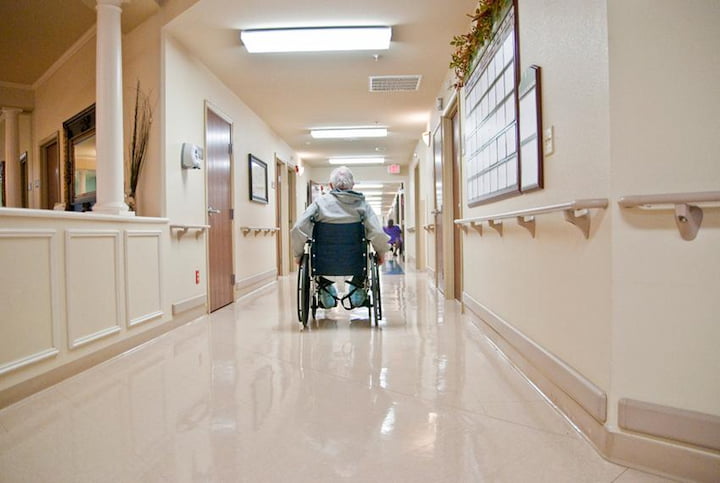The Best Flooring Options for Nursing Homes
If you have an older family member or friend, you don’t need statistics to know the fear of falling many older people have. Numbers only serve to confirm that their fear is real. According to CDC, 36 million falls are reported among older adults each year. About 3 million of them result in injuries that need to be treated in emergency departments. Most of these injuries include head and hip fractures and broken bones, and sprained ankles.
Knowing this, we want to do everything to make sure our dear seniors are safe. We want to keep them active and on their feet, as moving greatly reduces the risk of falling. And, we want to ensure the places they live in are the safest they can be, especially the floors. This stands for both residential and commercial nursing homes. Whether you’re helping an older person choose a flooring option for their home or looking for the best flooring options for an aged care facility, the same principles apply.
Wondering what to look for when choosing nursing home flooring and what is the best option out there?
Factors to Consider
Although safety and accessibility are top concerns, other factors should be considered when choosing a type of flooring for an aged care facility.
Consider the Use of Each Area
Nursing homes have areas for different uses. The first thing you want to consider is to get a better idea of how each area is used. That way, you can choose a flooring option that’s most suitable for that area. The best way to do that is to interview the staff and stakeholders. If possible, start by taking more information on past incidents, falls, or injuries. Once you thoroughly understand the room use and the safety hazards, do your research about which products will meet the safety needs of the residents.
If you’re looking for a single solution, it should be versatile and answer various rooms’ needs and uses. For example, a bathroom requires a non-skid waterproof surface. A high-traffic area like a hallway requires durability and longevity, and easy maintenance. However, for a lounge area or the bedrooms, you want to choose something more cozy and comfortable, as these are the home for your senior residents.
Once you’ve determined what you want from each area, it’ll be easier to decide on other factors.
Durability and Longevity
Considering that aged care facilities go through a lot during the years, the more durable the type of flooring, the better. An option that will last longer will save you money and time for renovating that needs to be done after the floors get damaged. Along with safety and accessibility, durability may be one of the most important factors.
Slip-Resistance
Floors with non-skid surfaces allow seniors to move independently and without help. They reduce the risk of falling because of slipping. It’s recommended that the aged care flooring has a high coefficient of friction, so it has higher slip resistance. Such floors allow for easier movement with a wheelchair or a walker.
Cushioning
While we can take steps to reduce falls in older people, we can’t completely prevent them. Whether because of vertigo, visual impairment or poor ankle support, falls will happen. But when they do happen, we want a type of flooring with better cushioning and shock absorption to minimise the impact of the fall. Such floors will reduce the risk of serious injuries. And they’re also softer, which makes them more comfortable for the feet.
Aesthetically Pleasing
As the name implies, a nursing home is a home for older people. They might spend the last years of their lives there, so we want them to feel at home. The flooring option you’ll choose should look good and complement the overall decor. That way, it’ll feel cosier and homey to the seniors and their family members and other visitors. Investing in good flooring can lead to more pleased customers and better reviews.
What Makes Vinyl Flooring the Best Option?
When you search for nursing home flooring options online, you’ll come across several options. These include rubber, cork, carpets, vinyl, wood and ceramic tiles. Ceramic tiles and wood are ranked worst, as their harder and uneven surface isn’t safe at all. Also, they’re not slip-resistant and are much more expensive than other flooring options. Carpets rank somewhere in the middle, providing cushioning but are hard to clean and maintain. Rubber, cork and vinyl rank best, considered the safest option. What makes vinyl superior in comparison with all other flooring options?
When it comes to vinyl flooring, there are a lot of great benefits that make it a popular choice for many residential and commercial uses. Vinyl is waterproof, which makes for easy cleaning and maintenance. It comes in a wide price range, making it one of the most affordable options. It provides a little harder surface than rubber and cork, but its’ more durable than them. On the other side, along with the price point, that can allow you to invest in an extra underlay of cushioning if you’re not satisfied with the one it already has. While these are some of the most obvious benefits, there are some other benefits specific to the needs of nursing home facilities. Consider the following:
- Vinyl sheets and tiles help develop one continuous flooring surface, which is very important in aged care facilities. It makes the floors smooth. This helps avoid sensory overload and false steps. It also provides good transitions between floor finishes if you decide on different flooring options for different areas.
- Many people say that vinyl looks and feels like plastic, so you should keep it for your kitchen and bathroom. These people may haven’t been introduced to the luxury vinyl tiles available in numerous designs, styles and colours. Many of them mimic stone, wood, and marble floors and creates a cosy atmosphere while providing all the other benefits of vinyl.
- Water resistance, which means waterproof in some cases, impedes unpleasant smells and odours.
- The softness of aged care vinyl flooring reduces impact sound.
- You can use tonal contrast carefully to give depth to the surface and make wall limits more visible.
- It promotes a matte floor finish with reduced sparkle. The last two are vital for the visually impaired to manage the space better.




